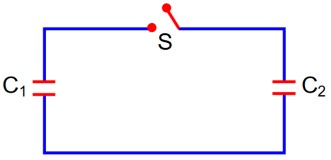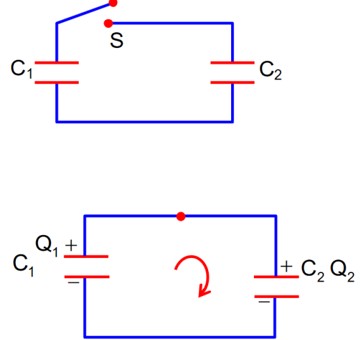Electrostatic Potential and Capacitance
Get insights from 125 questions on Electrostatic Potential and Capacitance, answered by students, alumni, and experts. You may also ask and answer any question you like about Electrostatic Potential and Capacitance
Follow Ask QuestionQuestions
Discussions
Active Users
Followers
New answer posted
2 months agoContributor-Level 10
This chapter covers the concepts of potential, capacitors, and potential energy. It is considered as one of the easy chapter of the class 12 Physics.
New answer posted
2 months agoContributor-Level 10
It is the farad (F). The name came from Michael Faraday. SI Unit of Capacitance means the ability of a system to store an electric charge. One farad is the capacitance of a device that needs one coulomb of charge to provide one volt potential difference across it. Mathematically, it is represented by - 1 Farad = 1 Coulomb/Volt.
New answer posted
2 months agoContributor-Level 10
In JEE Main Physics, electric potential and capacitance chapter has a weightage of 3% to 6%. You can expect around 1 or 2 questions from this chapter which carries 4 to 8 marks.
New answer posted
2 months agoContributor-Level 10
In NEET Physics exam, the chapter electric potential and capacitance carries a weightage of 2% to 5%, which means you can expect one question out of 45 questions.
New answer posted
2 months agoContributor-Level 10
The ability to do work on a charge is called the electric potential and the ability to store charge is termed as the capacitance.
New answer posted
2 months agoContributor-Level 9
Potential difference across resistor at time t = V = 30/3 = 10V
Current, I = 10 / (5 * 10? ) = 2? A
New answer posted
2 months agoContributor-Level 9
1/C = 5/ (ε? * 100) + 5/ (10ε? * 100)
⇒ C = (ε? * 1000) / 55 = (8.85 * 10? ¹² * 1000) / 55 = 1.61 * 10? ¹? F = 161 pF
Taking an Exam? Selecting a College?
Get authentic answers from experts, students and alumni that you won't find anywhere else
Sign Up on ShikshaOn Shiksha, get access to
- 65k Colleges
- 1.2k Exams
- 679k Reviews
- 1800k Answers


